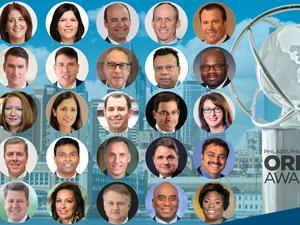
Unisys is doubling down on retaining its employees as the talent war squeezes companies looking for tech workers, CEO Peter Altabef told investors during a second-quarter earnings call on Tuesday.
The Covid-19 pandemic’s impact on talent, with companies in many industries aggressively recruiting IT workers to handle remote operations and tech challenges, does play a part in Unisys' goals to retain employees, but it isn’t the primary driver long-term, the CEO said — it’s the increasing demand for tech talent over the next decade.
A recent report from computer tech trade association CompTIA found that an average of 850,000 jobs in information technology were posted quarterly in 2020, and that tech jobs are expected to grow twice as quickly as other occupations between 2020 and 2030.
Altabef is preparing for that long-term growth, he said, and that means being a place where people want to work. The Blue Bell-based technology company is homing in on a variety of issues, such as diversity, equity and inclusion; corporate social responsibility and even paths for career development, the CEO said. There has to be an “all hands on deck” approach to making an attractive workplace, he said.
“We don't expect this to be an easy ride,” Altabef said. “We expect to have to do more and more to retain and attract talent.”
Workforce management is taking up a “very significant” part of executives’ attention, Altabef said. That includes Chief Operating Officer Eric Hutto and Katie Ebrahimi, chief human resources officer, along with any person who manages more than three people. It’s all focused on attracting and retaining employees, Altabef said.
Unisys (NYSE: UIS) had a 12.9% voluntary attrition rate for the second quarter, meaning the company lost 12.9% of employees in the quarter without them being replaced. While the attrition rate is higher than the 10.4% rate last quarter, Unisys’ attrition has fallen since last year and pre-Covid levels in 2019, Altabef said.
The attrition rate wasn’t a result of the pandemic or the current competition for talent in tech, the CEO said, but rather a seasonal trend. Pay bonuses come in the first quarter and attrition historically is higher in the second quarter, he said.
Unisys is also taking some cost savings and reinvesting it not only in IT or software development, but in upskilling, certifications and training for existing employees, Hutto said. Open positions filled internally have increased 13% since the end of 2020, Altabef said.
Unisys isn’t the only local tech company to focus on talent internally. Philadelphia-based Comcast recently expanded its Grows to Code program, which trains existing employees to be software engineers at Comcast.
“I think we have been successful with the focus on that so far, but this is going to be an effort every single day, and I think it's going to be an effort for the entire industry every single day,” Altabef said. “I'm just glad the wake-up call occurred now and not in 2030, by the time we have 4 million unfilled jobs.”
Unisys reported $517.3 million in revenue for the second quarter, up 17.9% from $438.8 million in the same period of 2020. Revenue for the quarter beat FactSet consensus estimates of $490 million.
Unisys’ earnings per share for the quarter also beat analyst estimates, with losses of $2.10 per share compared with FactSet consensus estimates of a $3.13 loss per share. The company had net income losses totaling $140.8 million for the quarter, far greater than its 2Q 2020 losses of $78.6 million.
Unisys’ stock was up more than 5% in mid-afternoon trading Tuesday to $23.50 per share.






